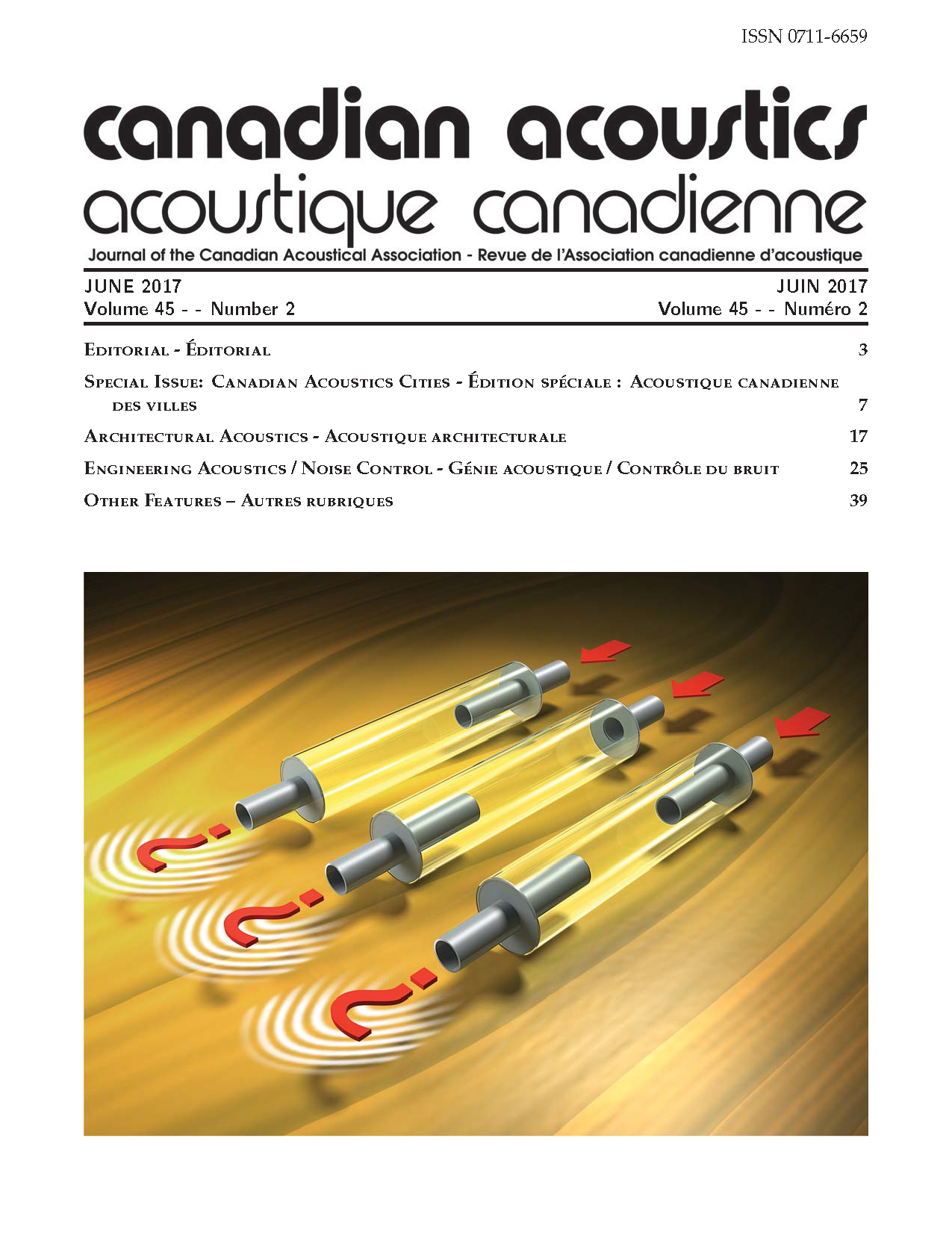Demonstrating the Feasibility of Near-Real-Time Vessel Noise Mapping to Manage Marine Mammal Noise Impacts
Mots-clés :
underwater acoustics, vessel noiseRésumé
Man-made ocean noise can cause physical injury and behavioral disturbance to marine life. It hampers marine mammals’ use of sound for foraging, communicating, navigating, socializing, and mating. Advancements in acoustic recorders, ocean observatories, vessel tracking, and noise modelling allow us to study and manage the effects of vessel noise on marine life. This paper discusses a study for the Canadian Space Agency to investigate the feasibility of a user-controlled web interface that provides near-real-time prediction of vessel noise in marine life habitats. ‘ShipNoiseView’ integrates live vessel position data from the Satellite-Automatic Identification System (S-AIS) with real-time remote sensing of oceanographic data and verified vessel noise propagation models to assess cumulative vessel sound levels and to manage the effect of noise on marine life through real-time monitoring and mitigationFichiers supplémentaires
Publié-e
Comment citer
Numéro
Rubrique
Licence
Author Licensing Addendum
This Licensing Addendum ("Addendum") is entered into between the undersigned Author(s) and Canadian Acoustics journal published by the Canadian Acoustical Association (hereinafter referred to as the "Publisher"). The Author(s) and the Publisher agree as follows:
-
Retained Rights: The Author(s) retain(s) the following rights:
- The right to reproduce, distribute, and publicly display the Work on the Author's personal website or the website of the Author's institution.
- The right to use the Work in the Author's teaching activities and presentations.
- The right to include the Work in a compilation for the Author's personal use, not for sale.
-
Grant of License: The Author(s) grant(s) to the Publisher a worldwide exclusive license to publish, reproduce, distribute, and display the Work in Canadian Acoustics and any other formats and media deemed appropriate by the Publisher.
-
Attribution: The Publisher agrees to include proper attribution to the Author(s) in all publications and reproductions of the Work.
-
No Conflict: This Addendum is intended to be in harmony with, and not in conflict with, the terms and conditions of the original agreement entered into between the Author(s) and the Publisher.
-
Copyright Clause: Copyright on articles is held by the Author(s). The corresponding Author has the right to grant on behalf of all Authors and does grant on behalf of all Authors, a worldwide exclusive license to the Publisher and its licensees in perpetuity, in all forms, formats, and media (whether known now or created in the future), including but not limited to the rights to publish, reproduce, distribute, display, store, translate, create adaptations, reprints, include within collections, and create summaries, extracts, and/or abstracts of the Contribution.


